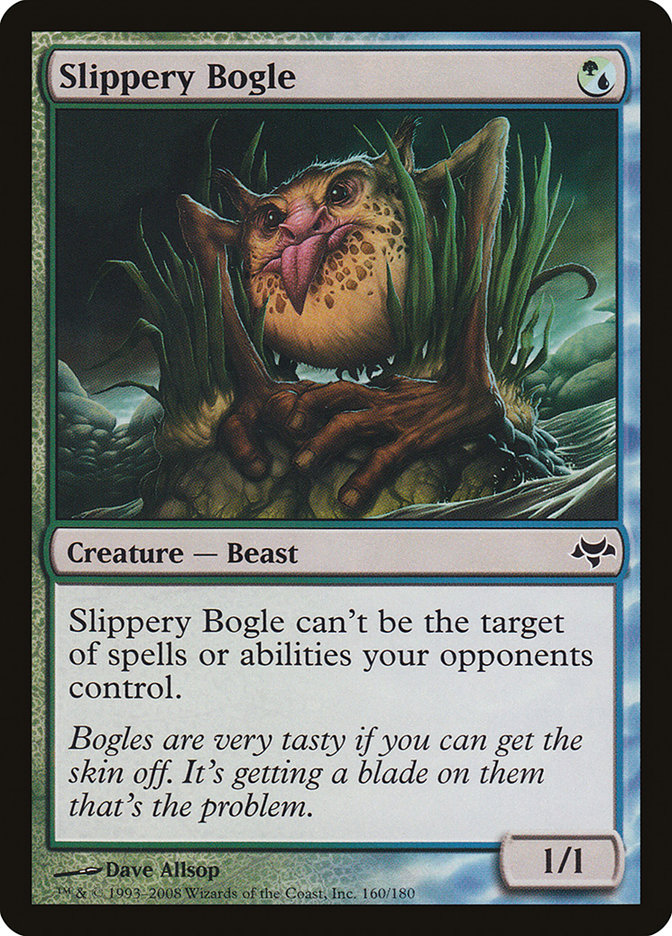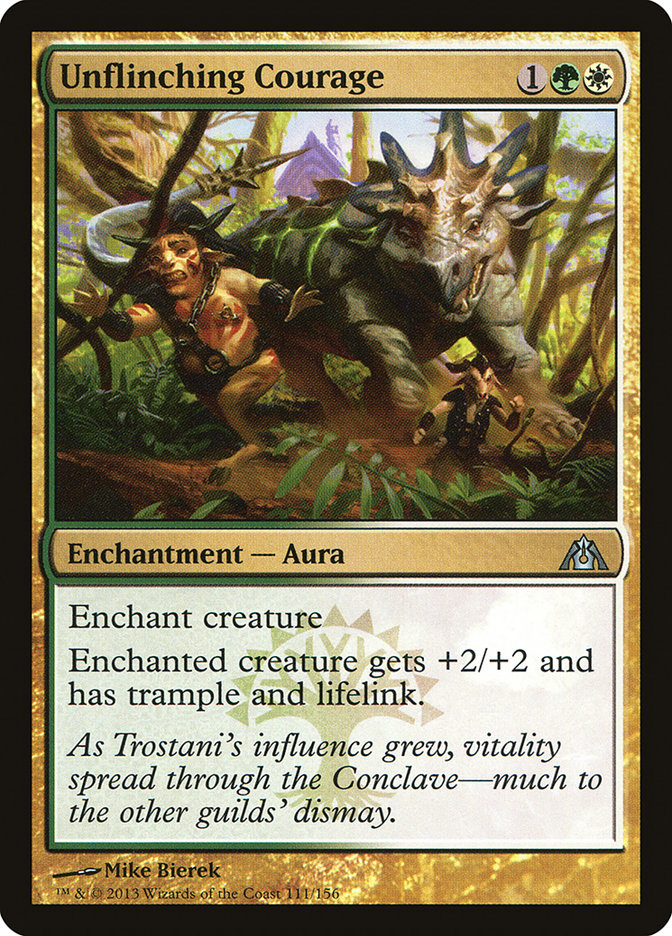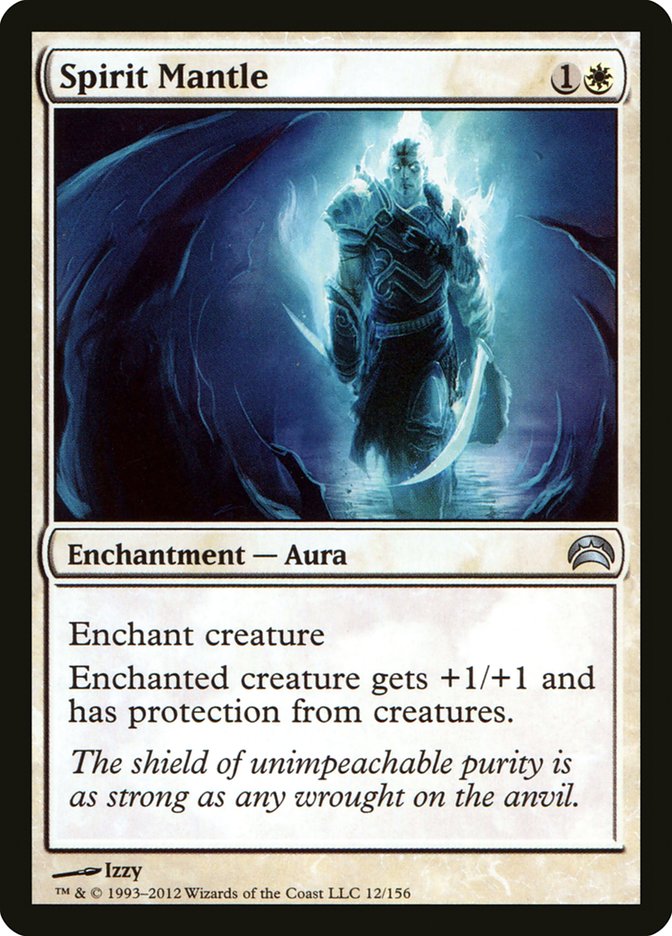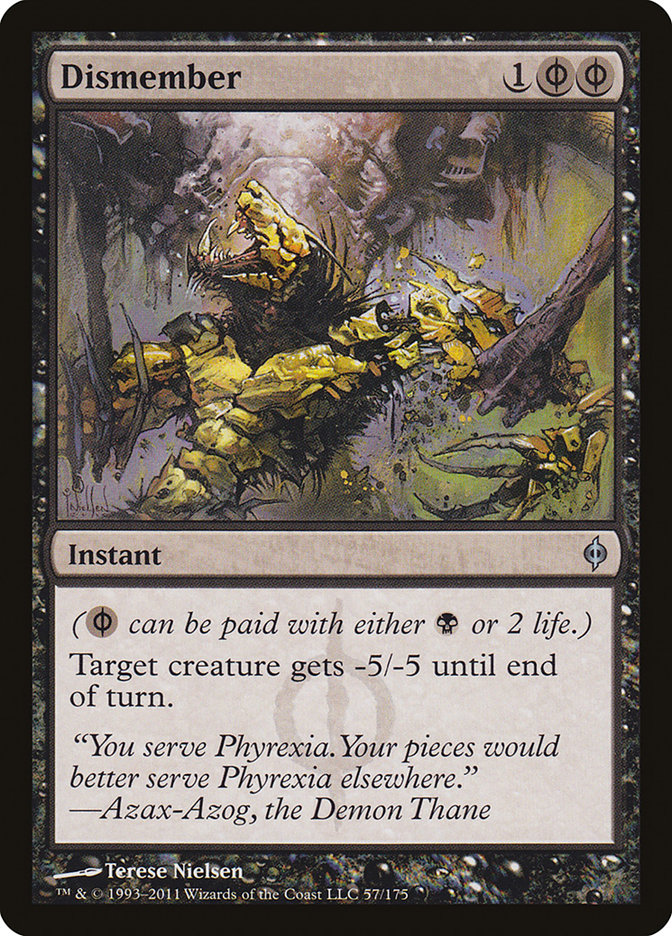Theros spoilers have finally started and brought us some goodies, but there are other topics to write about—Grand Prix Detroit among them. The last Grand Prix before the release of Theros will gather fans of Modern (which is occasionally my favorite format), so I’d like to speak about an interesting deck that recently posted a great result but hasn’t become very popular.
Some players dislike the deck because it’s hard to interact with (which is a measure of "fun" for them). Others dislike it because it’s "stupid" (which isn’t true). In reality, the deck isn’t easy to pilot and isn’t as rewarding to lucky players rather than good ones as most people seem to think. Moreover, it’s interesting to play, especially post-board when the pilot needs to be very good to dodge opposing hate.
Reid Duke took second place at the World Championship piloting this deck in Modern. That begs the following question:
Why aren’t more people simply copying Reid’s 75 and taking the advice from his article?
G/W Auras is extremely dependent on the metagame or, more precisely, dependent on how much dedicated hate there is in the metagame. It’s very similar to Affinity in that both decks may be perfect for one weekend and extremely poorly positioned the next. Both decks, however, can be tweaked for an expected metagame, and Reid’s list is a perfect example of a metagame call for a very certain field.
For Grand Prix Detroit, however, you must be ready for more than ten decks and for various devastating hate, which surely wasn’t a problem for Reid in Amsterdam. Another important thing significantly affecting deckbuilding is the lack of knowledge about your opponent’s list. Reid knew each of his opponent’s 75s while playing against them, whereas you will have to guess whether an opponent has access to Spellskite every single match.
Let’s look at Reid’s list and determine what could be changed in preparation for Grand Prix Detroit.
Creatures (12)
Lands (21)
Spells (27)

The first and the most important point where I disagree with Reid is Unflinching Courage. The card is very good, but it costs three mana, which is a lot for this deck. We often need to save one or two untapped lands to play around countermagic (mostly by sacrificing one Aura to Mana Leak and then resolving another one) or to cast removal. Given the fact that he played four Kor Spiritdancers and four Keen Senses, I’d rather diversify my threats among cheap cards than take the risk of losing to a single Disenchant or Mana Leak. Daybreak Coronet is simply too powerful to ignore, but Unflinching Courage is both more expensive and less powerful.
Additionally, I value protection from creatures much higher than the combination of trample and lifelink. Spirit Mantle grants our creatures evasion while still being quite good against popular combo decks like Melira Pod and G/R Tron, where a single block may give the opponent enough time to win.
Kor Spiritdancer and Keen Sense are necessary cards to keep the deck consistent, which I find to be crucial for long tournament. You may get lucky with Silhana Ledgewalker at FNM or a Magic Online Daily Event, but Auras mulligans frequently and is often forced to start with a mediocre five-card hand, so having sources of card advantage is essential.
A generic G/W Auras decklist should also contain some cards to interact with the opponent since it’s relatively hard to consistently race combo decks pre-board. Additionally, with our reliance on Daybreak Coronet to gain life due to the omission of Unflinching Courage, it’s important to be able to slow down an aggressive strategy like Affinity or R/G Aggro. A timely removal spell may be especially effective pre-board in case your opponent relies on Reid’s decklist as the generally accepted one. Available options include Path to Exile and Dismember, though I prefer Path to Exile due to its lack of life loss.
Another interesting card that might be relevant as a source of interaction is Mana Tithe. While it isn’t amazing in all scenarios, this card is at home in a deck like G/W Auras. Because the deck is able to assemble a reasonable threat quickly and efficiently, Mana Tithe is a great way to punish the opponent for trying to keep up with us and potentially ruin our day.
Mana Tithe is useless against Supreme Verdict but is surprisingly powerful at most stages of the game. Aside from the canonical example of Paul Rietzl Mana Titheing a Cruel Ultimatum in the Top 8 of Pro Tour Amsterdam, there are enough situations where you can catch an opponent with five or six mana available (like Mana Tithe into Restoration Angel aiming to blink Snapcaster Mage to recast Lightning Helix or Mana Leak) for it to be worth it.
Creatures (12)
Lands (19)
Spells (30)

The key differences between my and Reid’s lists are the following:
1) Twenty lands instead of 21. I’ve been comfortable with nineteen lands without Unflinching Courage, but I finally decided to play twenty with seven fetchlands (instead of Reid’s six). I’ve chosen to play a fetchland over the fourth Horizon Canopy because I hate having two Canopys as my only mana sources. There’s no reason to play fewer than three Canopys, but four is excessive to me.
2) Four Kor Spiritdancers and just two copies of Keen Sense. I’d be happy to play more to keep the deck consistent, but I feel that some slots for interactive spells are necessary. As a result, I cut a Keen Sense along with the fourth Spirit Mantle and a land. I could also imagine cutting one copy of Spider Umbra in metagames without Pyroclasm, but it’s otherwise unlikely.
Reid’s sideboard contains four removal spells, while I have two copies maindeck and two copies of Seal of Primordium as utility card that deals with Spellskite and Birthing Pod and pumps Ethereal Armor.
Reid’s three copies of graveyard hate are exchanged for Torpor Orb and Gaddock Teeg. I don’t really care about matchups like Living End where Rest in Peace is great and don’t want to side it in against Snapcaster Mage. Gaddock Teeg is fine against G/R Tron, Scapeshift (with an Umbra, it is close to an auto-win), and random control decks like Gifts Ungiven and isn’t useless against Birthing Pod. Torpor Orb is necessary against Splinter Twin decks and helpful against Melira Pod (though they can still go off with Archangel of Thune).
The last card, Retether, is homage to Supreme Verdict and Back to Nature. I’d never play more than one due to its cost, but one copy is fine. However, it’s the first card to cut if you need something else.
Notable omissions include Spirit Link, which is fine against an aggressive non-blue field; Silhana Ledgewalker due to the reason described earlier; and hate for Storm, which is basically extinct but could emerge in Detroit.
I’ve seen attempts to incorporate blue in the deck, but I don’t think it’s the right way to go. Geist of Saint Traft on turn 3 is nowhere near as powerful in Modern as it is/was in Standard. Attaching two Auras to Slippery Bogle or Kor Spiritdancer is a more powerful plan in Modern. Another reason to try blue and ruin your mana is Spell Pierce against Living End, but I’d rather ignore this matchup or rely on Mana Tithe.
Now for the matchups!
Both Birthing Pod decks seems to be 50/50, with slight improvement post-board as we have a ton of hate for their game plan while they mostly rely on Spellskite (and normally have it in their maindeck). Sideboarding against these decks is tricky because we certainly have more cards than we can side in. Jund variants are somewhat negative due to the combination of Liliana of the Veil and discard spells, so your post-board plan is to mulligan to Leyline of Sanctity. However, there are a lot of good hands without Leyline, so don’t overestimate it. The good news is that Jund decks rarely have dedicated hate against us.
Various U/x are normally a good matchup unless they play cards like Tempest of Light. The most common hate is, however, Engineered Explosives. The key tactic in these matchups is to create a reasonable clock and not play into Supreme Verdict or something similar. Be careful during first two or three turns since they often determine the course of the game. Your primary goal is to resolve an Umbra.
Scapeshift is somewhat troublesome (I disagree with Reid on this one). The matchup is very winnable, but Scapeshift has a lot of ways to interact with you (damn that Izzet Charm) without slowing its own development. The best post-board play is Gaddock Teeg with an Umbra on it. Don’t also forget that they may have Prismatic Omen or Spellskite. Leyline of Sanctity is very good here, but I don’t recommend mulliganing into it if your first hand is above average.
G/R Tron is actually an easy one. They have very few ways to prevent you from building a monster (just don’t cast a turn 1 hexproof creature on the draw into Pyroclasm). We also have an assortment of options post-board, which makes things easier. Reid Duke stated that All Is Dust is a problem, but nobody plays it (and we have Mana Tithe), while Oblivion Stone is weak to Suppression Field and Stony Silence.
Random tip of the day: if you have an early choice, cast Suppression Field before Stony Silence to prevent Karn Liberated from ruining your day.
U/R Splinter Twin and U/W/R Splinter Twin are both a nightmare and probably our worst matchup. The opponent doesn’t care about our life total or theirs and can effectively ignore us if needed. Their common maindeck Spellskites and occasional Blood Moons don’t make things easier.
Affinity is our Evil Twin, with artifacts instead of enchantments. Pre-board games are often a race, where lifelink is powerful but not crucial (hello, Inkmoth Nexus). However, we have a huge advantage post-board due to much better hate. Just don’t lose to Whipflare.
Living End is another nightmare. Our only hopes are Mana Tithe and Retether (works for the second Living End—you can fetch for Dryad Arbor and then cast Retether). Try to avoid Living End if possible.
R/G Aggro, W/G Aggro, and other fair and semi-fair aggressive decks are our natural victims since they can’t successfully outrace us and aren’t good on defense. However, the list above isn’t for an aggro-heavy metagame; Spirit Link is better than Keen Sense in such an environment. The two most troublesome aggressive decks are ironically Merfolk and Soul Sisters.
I don’t expect much dedicated hate in Detroit, so G/W Auras may be a very reasonable choice. The bad matchups aren’t popular right now, while the good ones are. Build your list the most reliable way, practice enough to be familiar with it, and go to Grand Prix Detroit without fear!







